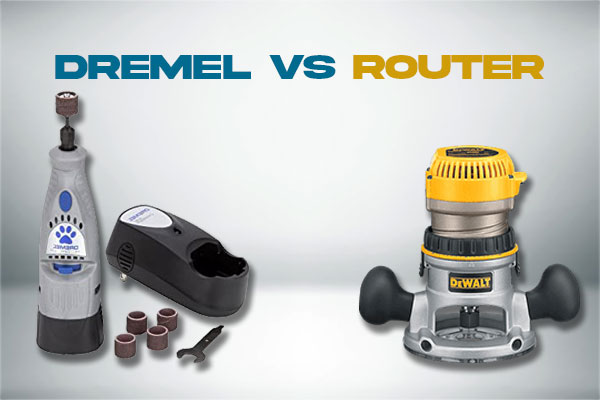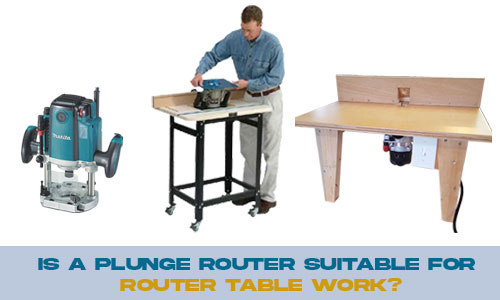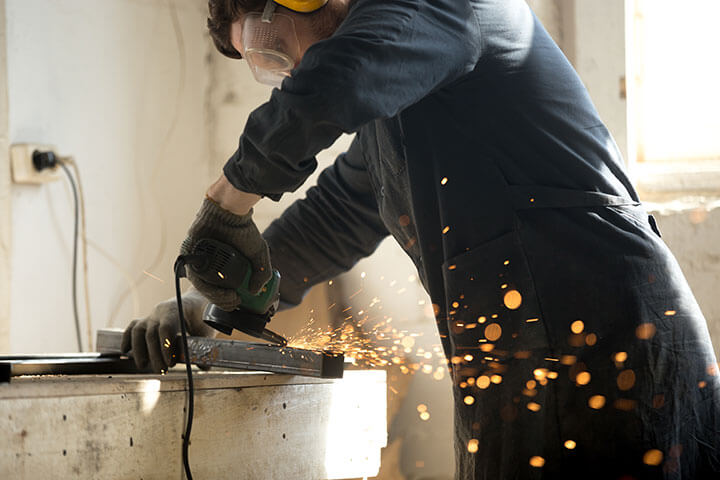Fixed Base Router vs Plunge Router: A Comparative Discussion
Woodworking is a matter of passion and dedication. You might be a woodworker of passion or profession it requires an amount of work, time and enthusiasm however without the right set of tools your diligence will go in vain. So whether your workshop is for DIY crafts or professional carpentry decorate your workshop with the right tools.
There are quite a few tools that are really important for woodworking. In a word, these tools bring that special “wood-crafting” vibe to your workshop. One of these tools is the router. The router is one of the most versatile tools that is necessary even when you are a novice and learning woodworking for the first time. If you ask me, I would say without a router your workshop is incomplete.
There are two types of the router: plunge routers and fixed-base routers. Here comes the most frequently asked question: “which router is best: fixed-based router or plunge router?” Read the below article carefully, you will get the answer.
First, let’s learn about what is a fixed router and what a plunge router is:
What is Fixed Based Router:
As the name suggests. A fixed base router is one with a fixed base, rather than a moving one. In a fixed base router, the depth of the bit is constant and you have to set it manually before cutting. You will encounter it frequently in professional woodwork shops since experience carpenters find it more comfortable. So I would suggest there is nothing to lose if get used to it.
Many find fixed base routers more comfortable you don’t have to adjust much manually. Once the router is placed, it is locked there physically and ready to go without any trouble. Since the bit doesn’t move anywhere you can move the workpiece easily and cut with precision. So undoubtedly it is the best friend for those who work with precision.
Reason to Buy Fixed Router
Control
the fixed base router provides more control and stability during work as hands stay close to the workpiece while using it. So it is ideal for freehand edge work or, for creating zigzag edges.
Repeat Application
with the fixed base router, you do not have to repeat the cut to get the accurate depth. Well, the plunge router can do this for you but in that case, you to keep a close eye on the application and reintroducing the router can affect the accuracy of the depth, while a fixed base router can give you the desired result at the first try. Just set the depth and the router will do it for you.
Using Router Table
it is really easy to set up fixed base router parts on the router table. If you are using an interchangeable router base, first set the fixed base part and then add the plunge base motor to slot it back into the table whenever you need it.
What is a Plunge Router:
A plunge router can lower the height of the bit while its base is flat on the workpiece. This is an excellent power tool for cutting in the middle of a piece. It is true that the plunge router is little complex equipment but once you get used to it, you will find it incredibly easy and useful.
A plunge router has two arms, one on each side, that allow to manually “plunge” or “push” into the workpiece to begin the cutting. It means you have to drive the cutting part into the wood using your own force. It gives more control over the router and gives a flawless output.
Reason to Buy Plunge Router
Template Router
The handiest way of template routing with guide bushing is, using a plunge router. Just set the router over the template, turn it on, preset the depth and the router will do the rest.
Flawless jigs
The plunge router is perfect to make any pattern and jigs on your woodwork piece. Sophisticated jigs to make joints, tenons, dovetails, or whatever pattern you want; everything is possible with a plunge router.
Inlay Grooves
The plunge router is ideal for any type of delicate inlay work. A plunge router has a mechanism of smooth entrance and exit. Since you can preset the depth, you can easily adjust the depth of the design without harming the wood piece.
Burn-Free way to Cut Flutes
The plunge router is the best to create a burn-free flute. All you need is a start block, a stop block, and an edge guide. Set the router on the start block, plunge the bit to the preset depth, and then press the lock lever to create a cut along with the board. At the end of the cut release the lock lever, the bit will retract off the workpiece, leaving behind the cleanest flutes possible without any burn marks.
Adjustment and Built-in Bit Protection
Micro-adjustable depth knobs allow adjusting of depth and bit height dead precisely. Besides plunge router has built-in bit protection which means a plunge router automatically surrounds and protects the bits when it’s not in use. Disengage the lock lever, the spring-loaded mechanism will lift the bit inside the safety box of the router.
Cutting Mortises
cutting mortises is much easier with a plunge router. The adjustable stepped turret allows the creation a relatively shallow but deeper cut without spinning the bit. Just a small twist on the stepped turret increase the depth-of-cut setting, ensuring the cut is not too deep.
Best for Some Specialized Bits
some specialized bits are best with a plunge router. For example, creating a keyhole/picture-hanging groove requires the bit to plunge down to the stock, slide laterally to cut the groove, and then reverse the plunge to create a keyhole on the opposite end. These bits have a cutter on the top, bottom, and slide and clearly, they don’t fit with the fixed-based router.
Drawbacks of the Fixed Base Router and Plunge Router:
Unfortunately, the fixed base router does not offer flexibility like a plunge router. For example: if you need to maneuver the router in various ways, then this might not be the right choice for you. Besides fixed based routers can’t cut from the middle because the fixed base router cutting bit is also fixed and the middle of the wood is beyond its reach.
It is true plunge router provides versatility however, the major drawback of this is, it is expensive. A person who is new at woodworking plunge routers is not a good choice for them because it requires deep knowledge about cutting the edge. Since you need to make something out of the workpiece and the tool, itself is costly, without proper knowledge you should not operate this.
Plunge Router vs Fixed
Fixed router vs Plunge router; if you want to compare which one is the best among them you should consider the versatility, use of the router as well your capabilities. The fixed base router doesn’t offer versatility, however, gives you precise cuts, and accurate depth.
On the other hand, the plunge router is versatile, but it is expensive and needs a depth of knowledge to operate.
Another factor is fixed base router is less heavy than a plunge router. Many people prefer a fixed base router as it is smaller in size, weightless, and has a lower center of gravity. As a result, it is easy to control. Contrarily since the plunge router is a big, heavy, loud, and more powerful tool, it is good at dealing with larger, however without expertise difficult to control.
Matters you Should Consider Before Making a Buying Decision:
According to my opinion, before making a buying decision you should consider your position in woodworking. If you are new to the woodworking scene, I think it’s better to wait for a bit before investing money in the plunge router. For novices who are looking for a router that can cut wood easily, I think a fixed base router is best for them.
On the other hand, if you have experience in woodworking and need to work on a piece of wood with varying depths then a plunge router is an answer to your all question.
While a less flexible fixed router is a perfect introduction to woodworking, a flexible plunge router can increase your working capabilities by several folds. However, to solve the debate between fixed routers and plunge routers big manufacturing companies have introduced combo router kits.
A motor comes with both a plunge and fixed base and you can easily switch between the two. Two popular combo sets are Bosch 3 ½” 2 ½ HP corded plunge and fixed base router kit, DeWalt 2 ¼ HP DW618PK variable speed plunge/fixed base router combo. My general recommendation says going with the combo is the best bet to eliminate all the confusion between the two.
Bottom Line
The bottom line is there are verities of routers available in the market. But the ultimate decision definitely depends on you. Whether you want to go with a fixed base or plunge router or combo, it all depends on your expertise, budget, and the projects you need to do.
Table of Contents





![How To Clean Stainless Steel Appliances? [Tips & Tricks]](https://woodworkingarena.com/wp-content/uploads/2018/08/Stainless-Steel-Appliances-1-768x511.jpg)